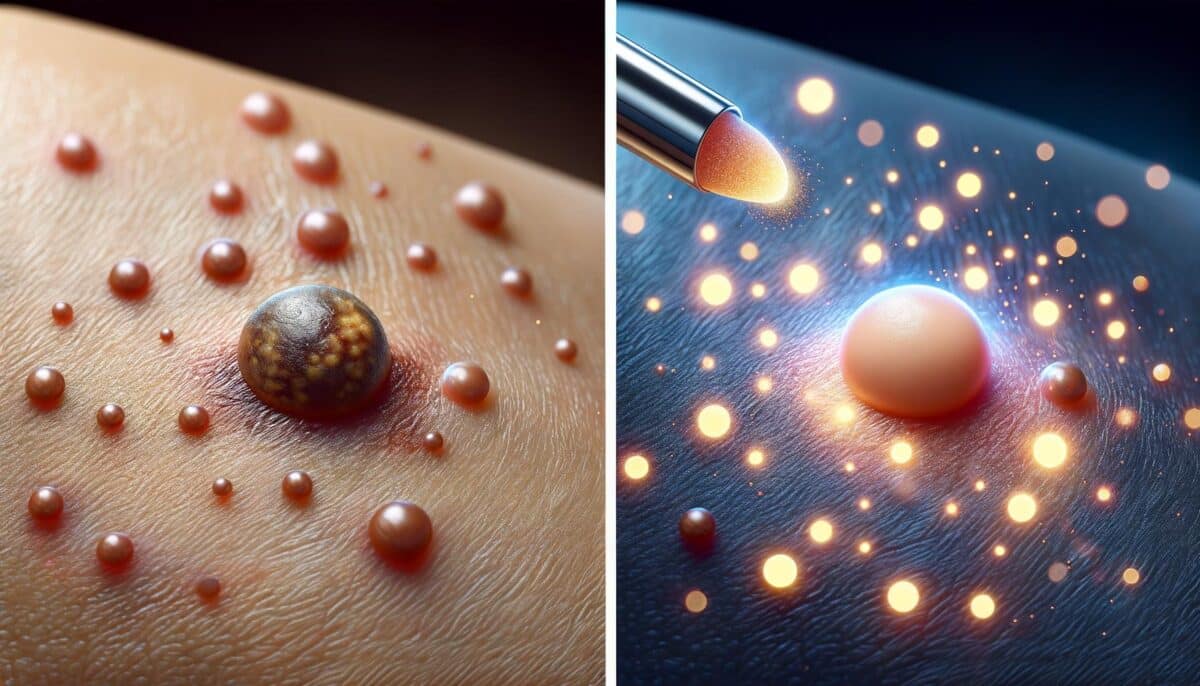What Are Moles and Why Remove Them?
Moles, medically referred to as nevi, are common skin growths that occur when melanocytes, the cells that produce pigment, grow in clusters. While most moles are harmless and simply a cosmetic feature, some may lead to health concerns such as melanoma, a type of skin cancer. Reasons for considering mole removal include: potential for malignancy, discomfort or irritation, and aesthetic preferences. It’s essential to monitor moles for changes in size, color, or shape, as these can be indicators of potential skin cancer. When considering removal options, the decision should be guided by factors such as the mole’s size, location, and whether it’s raised or flat.
Professional Mole Removal Options
There are various professional methods for mole removal, each with its own advantages and considerations. Some of the most common methods include:
- Excision: Involves cutting out the mole entirely and may require stitches. This method is often used for larger moles.
- Shaving: The mole is shaved off at skin level, useful for raised moles.
- Laser Removal: Utilizes laser light to remove the mole, generally for smaller, flat moles.
Each method also brings various recovery times and potential for scarring, which is why consulting with a healthcare professional is crucial for determining the most suitable procedure based on individual needs and skin type.
The Rise of At-Home Mole Removal
In recent years, there has been an increase in the popularity of At-Home Mole Remover kits. These products often include creams or devices that claim to remove moles safely and conveniently by the user without a visit to a dermatologist. However, such convenience does not come without risks. The main concerns with at-home treatments include the potential for incomplete removal, incorrect diagnosis, risk of infection, and scarring. Additionally, these products may not be suitable for all mole types, particularly those with potential malignancy. Therefore, it’s advisable to seek professional guidance before attempting at-home mole removal.
Evaluating the Safety and Effectiveness of At-Home Mole Removers
The effectiveness and safety of At-Home Mole Remover products can vary greatly, depending largely on the specific product used and the individual user’s application. Many dermatologists emphasize that self-assessment of moles can lead to missed diagnoses of skin cancer. Even products that appear effective may not address underlying health issues. Here are some key considerations when evaluating such products:
- Read reviews and testimonials for insights into user experiences.
- Check for product approvals or endorsements from reputable dermatological organizations.
- Be aware of potential side effects such as skin irritation or scarring.
Ultimately, understanding both the benefits and limitations of these products will help ensure informed decision-making.
Professional Advice and Final Considerations
It’s imperative to involve healthcare professionals when dealing with mole removal due to the potential health risks associated with moles. Dermatologists can offer medically approved methods that are generally safer and more effective than at-home solutions. If considering At-Home Mole Remover options, it is best to first confirm that the mole in question is benign to avoid potential complications. Regular skin checks by a healthcare professional are recommended to monitor any changes in moles and assure overall skin health.
Conclusion
Mole removal is a personal and sometimes medically necessary decision. While At-Home Mole Remover products offer convenience, approaching mole removal with caution and professional guidance is crucial to ensure safety and effectiveness. Evaluating the best method based on individual needs and involving healthcare professionals can lead to satisfactory outcomes with minimal risks.
